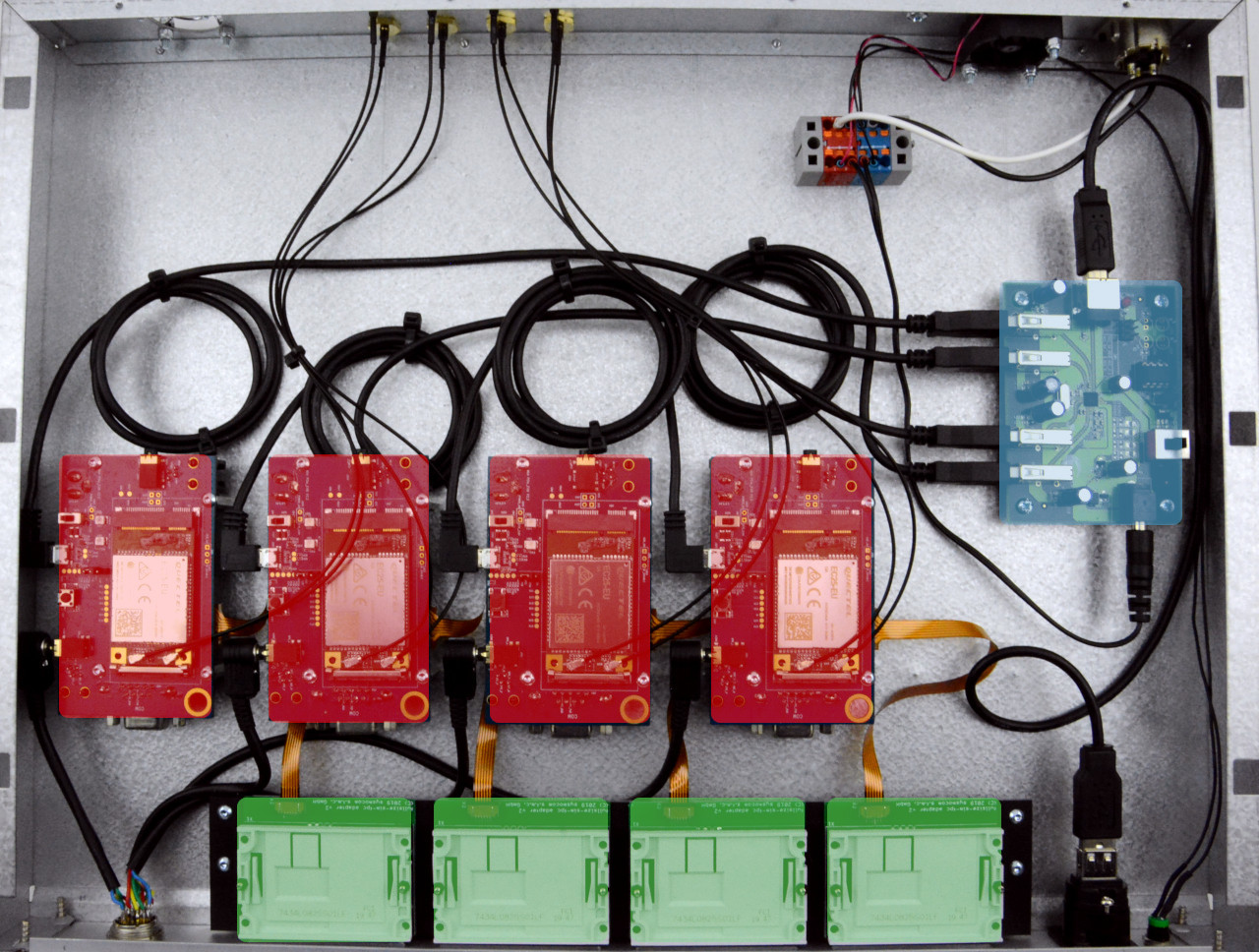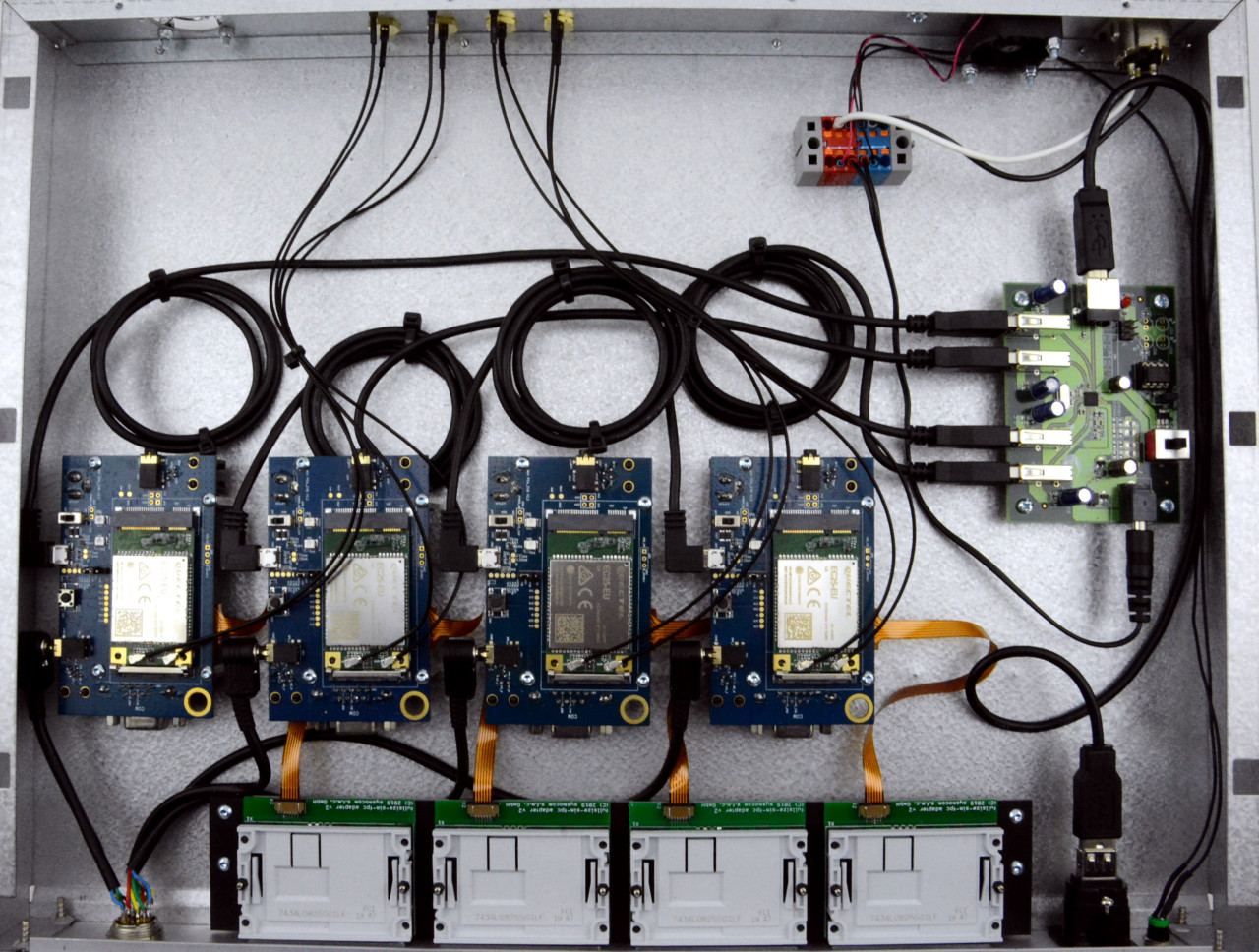CIMODQ4 subsystem provides four VoLTE capable modems for IMS testing.
We’ve been working on a number of LibreCellular hardware projects in parallel this year and this in part explains why overall progress has been slower than one might hope. With excuses out of the way we’d like to introduce the latest addition to the continuous integration platform, CIMODQ4.
Automating IMS testing
Assuming that you don’t have a 2G or 3G network to fall-back to, native voice calling in 4G and 5G networks — which is to say using the integrated dialler and not an “over-the-top” VoIP service or social media/IM platform — is supported by the IP Multimedia System (IMS). This is built on top of SIP, Diameter and IPsec protocols and is moderately complex, hence automated testing of the IMS stack would prove beneficial.
Handset — a.k.a. user equipment (UE) — support is taken care of via an IMS client, which for various reasons is typically provided by the silicon vendor and, as you might expect, proprietary. One way of automating testing is to drive Android handsets via ADB and have them set up and tear down voice calls. Which is probably the only way you can properly test compatibility across different handset vendors and smartphone OS / IMS client releases.
However, using LTE modems would be more convenient and should be sufficient for testing IMS basic functionality and stability. The only problem then being that the IMS client is typically integrated at the level of the smartphone OS. Fortunately, there is an exception in the form of the Quectel EC25 modem, which directly supports VoLTE and in fact it has been suggested that this is achieved by it running a minimal Android build.
 Quectel also provide an EVB kit which breaks out the various interfaces on the EC25, including audio I/O. The CIMODQ4 design is based around four of these EVB kits + modems, which can be seen pictured above highlighted in red. These are connected to a host (either CICON or CIHOST) via a four port USB hub, which is highlighted in blue. The benefit of the chosen hub being that downstream USB port power — and hence modem power — can be controlled via software.
Quectel also provide an EVB kit which breaks out the various interfaces on the EC25, including audio I/O. The CIMODQ4 design is based around four of these EVB kits + modems, which can be seen pictured above highlighted in red. These are connected to a host (either CICON or CIHOST) via a four port USB hub, which is highlighted in blue. The benefit of the chosen hub being that downstream USB port power — and hence modem power — can be controlled via software.
The modem EVB kit SIM slots are each connected via FPC to a full size slot (highlighted in green) which is mounted in the CIMODQ4 front panel.
As ever, the bill of materials, mechanical designs and graphics have all been published to GitHub. For further details, see the CIMODQ4 documentation.
Next steps
We’ve also been working on CIRAN2, a new radio access network CI subsystem, which is more modular than CIRAN1 and capable of accommodating two test base stations. As part of which new custom PCB designs were developed. We’re aiming to complete the documentation for CIRAN2 and associated boards over the next few weeks, following which details will be shared here.
